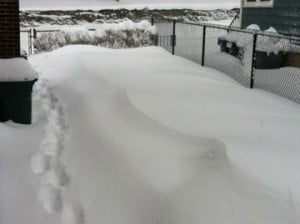
Winter in Boston is simply magical and it is especially true when there’s snow on the ground. Fluffy, white flakes blanket the city, untouched and glistening in the sun. The landscape, once an ocean of greenery, is transformed into a sheet of beautiful, sparkly white.
If you ever had to dig out your driveway or sidewalk after a snowstorm, then chances are good you ended up with some aches and sore muscles.
Shoveling snow is a physically demanding activity. It is also a well-known trigger for heart attacks, especially if you are a generally inactive person. Even pushing a heavy snow blower can raise the blood pressure and heart rate significantly. So, go easy on yourself, get the kids involved, or hire someone to do the hard work for you.
Sooner or later, we all have to get out of the house. The next time you pick up a shovel after a snowstorm, consider these tips for safe snow shoveling:
1. Warm-Up
As with any physical activity, you need to prepare the muscles for the work ahead. A proper warm-up is to help get the blood flowing and the muscles ready for action.
2. Stay Hydrated
Drink plenty of clear liquids, as you will be working up a sweat.
3. Take Frequent Breaks
Avoid wearing yourself out. Head indoors to stay warm and dry off, and eat a nutritious snack to refuel your muscles.
4. Light Loads
Shoveling many light loads is less taxing on the body than shoveling fewer heavier loads.
5. Lift Properly
To avoid back trouble, lift a shovelful of snow with your legs, not your back.
6. Listen to Your Body
If shoveling snow leads to symptoms of shortness of breath, lightheadedness, and/or chest pains, drop everything and seek medical help immediately.
7. Don’t be Perfect
Don’t feel like you need to remove every speck of snow. It is a waste of time and energy.
The next time winter throws a few of its snowstorms your way, take steps to protect yourself and you will greatly minimize the common aches and pains of digging yourself out of the snow.





Connect With Me!